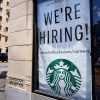Introduction
Forty-one million people lost their jobs in 2020 as the pandemic ravaged the U.S. economy, the most layoffs in at least two decades. But CEOs had a pretty good year. A great one, in fact.
CEOs at the largest publicly traded companies earned, on average, 351 times as much as the typical worker in their industry, according to a new analysis by the left-leaning Economic Policy Institute. That’s the largest gap since the stock market bubble peaked in 2000.
Those executives also got a handsome pay raise: 18.9% on average. Meanwhile, the typical worker (who didn’t get laid off) saw only a 3.9% increase in wages.
The pay gap between top executives and their employees has been widening since the 1980s, when CEOs made about 45 times as much as the median worker.
“The escalation of CEO compensation, and of executive compensation more generally, has fueled the growth of top 1% and top 0.1% incomes, generating widespread inequality,” wrote economists Lawrence Mishel and Jori Kandra, who authored the study.
Chief executives at America’s largest companies don’t get paid the way the average worker does. Beyond a set salary, their compensation packages include other forms of income, such as bonuses, company stock options and long-term incentive payouts, which can vary based on performance and the status of the stock market.
The new analysis focuses on a broad measure of CEO pay, based on the value of stock options when they were cashed out, not when they were awarded. It also measures pay using the value of stock awards when they were vested.
Mishel and Kandra analyzed executive compensation at the 350 largest public firms in the country, though their findings do not specify which companies had the widest pay differences. A recent report by the AFL-CIO labor federation does. It relies on a different measure of the CEO-worker pay ratio — one that’s reported by the companies themselves and includes part-time workers.
Businesses that rely on low-wage, part-time workers were among those with the largest pay disparities last year. Clothing retailer Abercrombie & Fitch had the biggest: CEO Fran Horowitz made 6,565 times more money than the company’s median employee. Chipotle Mexican Grill and The Gap also reported massive pay gaps.
Economists have various theories for why CEOs are making so much money these days. Some say it’s a reflection of their skills and market value, while others believe it’s because they have too much power in setting their own pay.
Another consideration: After tax cuts during the Reagan administration in the 1980s, CEOs had more incentive to inflate their pay.
Before, paying CEOs a ton of money didn’t make sense because the government would tax most of it away, with top marginal income tax rates above 90%. Afterward, executives who negotiate a larger salary could keep much more of it.
Capital gains tax rates, which tax income earned from stocks, also plummeted during the Reagan era.
Mishel and Kandra propose several policies they believe will shrink income inequality. The first is simple: Congress could reinstate high top marginal income tax rates to reduce the incentive for executives to push for exorbitant compensation. Other options include raising corporate tax rates on companies with large pay gaps and allowing a firm’s shareholders to vote on compensation for top executives.
Alexia Fernández Campbell is a senior reporter at Public Integrity. She can be reached at acampbell@publicintegrity.org. Follow her on Twitter at @AlexiaCampbell.
Read more in Inside Public Integrity
Watchdog newsletter
Broken refugee program complicated Afghanistan evacuation crisis
The refugee resettlement program has been mired in red tape for years, preventing thousands of Afghans from being resettled in the United States.




Join the conversation
Show Comments